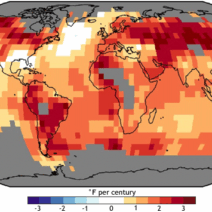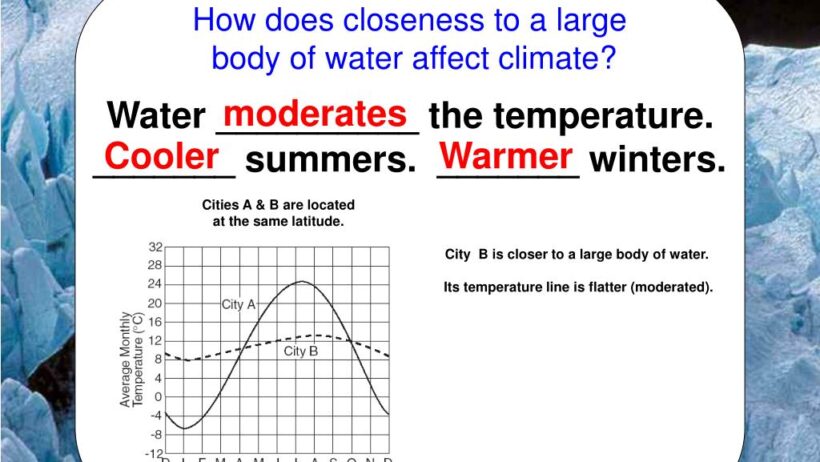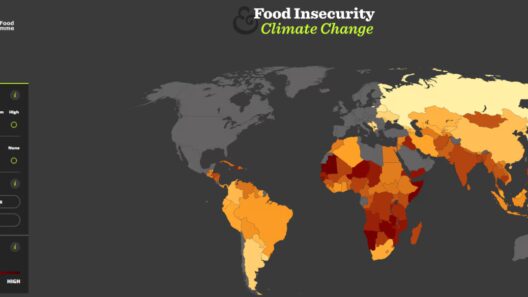Climate change is poised to transform agriculture in unprecedented ways by 2050. As atmospheric temperatures rise and the frequency of extreme weather events becomes more pronounced, the agricultural sector must adapt to maintain food security. Understanding the implications of climate change on agriculture necessitates a multi-faceted exploration of various factors, including soil health, crop yields, pest populations, and socio-economic impacts. This article delves into these dimensions to illuminate how climate change will reshape agriculture over the coming decades.
Firstly, one of the most significant factors influencing agriculture is temperature change. Average global temperatures are expected to rise by 1.5 to 2 degrees Celsius by 2050, depending on greenhouse gas emissions trajectories. This warming will affect crop growth cycles, potentially jeopardizing the delicate temporal synchrony between climate and agricultural practices. For instance, crops traditionally suited to temperate climates may struggle to flourish as their optimal growing temperatures shift. In subtropical and tropical regions, however, the increased warmth could enhance growth for certain staple crops like maize and sorghum, but adverse effects due to heat stress could counteract these benefits. Essential to note is that different crops exhibit variable thresholds for temperature tolerance. Therefore, identifying resilient crop varieties will be crucial for farmers as they navigate the complexities of a changing climate.
Precipitation patterns are another major concern. Climate change is expected to disrupt the hydrological cycle, leading to altered rainfall distribution, intensity, and seasonality. Some regions may face drought while others could be inundated with excessive rainfall. This dichotomy presents formidable challenges. Drought-prone areas, such as parts of sub-Saharan Africa and the American Southwest, will experience diminished water availability, adversely affecting irrigation and, consequently, crop yields. Conversely, regions experiencing excessive rainfall are likely to confront flooding, which can lead to soil erosion, nutrient leaching, and loss of arable land. Ensuring sustainable water management systems will be imperative to navigate these shifting precipitation patterns.
Soil health is central to agricultural resilience under climate change. The interplay between increased temperatures, altered rainfall, and soil quality introduces a complex scenario for farming practices. Soil degradation, exacerbated by climate dynamics, can lead to diminished fertility, ultimately impacting crop productivity. The loss of organic matter, coupled with erosion risks from intense rain events, compounds these challenges. Regenerative agricultural practices, such as cover cropping, reduced tillage, and organic amendments, can enhance soil structure and fertility, thus fortifying agronomic resilience. Furthermore, a shift towards agroecological principles may harness the power of biodiversity in farming systems, promoting a holistic approach to food production that aligns with ecological processes.
Pest and disease dynamics are also expected to change significantly. Warmer temperatures can alter the lifecycle and population dynamics of pests and pathogens, potentially leading to increased infestations. For example, pests such as the European corn borer are likely to expand their range northward, threatening crops previously less affected by these organisms. Conversely, beneficial insects, like pollinators, may decline due to habitat loss and changing climate conditions. Farmers will need to employ integrated pest management strategies that are adaptable and informed by continuous monitoring to mitigate these emerging threats effectively.
Climate change presents not only biophysical challenges but also socio-economic implications for the agricultural sector. Smallholder farmers, particularly in developing nations, are often the most vulnerable to the repercussions of climate change due to limited resources for adaptation. They face the dual challenges of increasing food demand as populations grow alongside declining productivity in their regions. Food security is, therefore, a critical issue, particularly in regions heavily dependent on rain-fed agriculture. Governments and organizations must prioritize support mechanisms to facilitate access to climate-resilient technologies, financial resources, and educational programs aimed at empowering farmers to implement adaptive strategies.
Moreover, climate change can significantly impact global trade dynamics in agriculture. As certain regions face declining yields due to climate conditions, reliance on agricultural imports from more resilient areas may increase. This shift can reshape market relationships and inadvertently raise food prices, exacerbating hunger and inequity. Policymakers must navigate these complexities through international cooperation, enhancing food distribution networks, and investing in sustainable agricultural systems worldwide.
Adaptation and mitigation strategies will play a vital role in the future of agriculture. Transitioning to climate-smart agriculture involves implementing practices that not only reduce greenhouse gas emissions but also enhance resilience to climate impacts. This multifaceted approach may include agroforestry systems that sequester carbon, improving soil health through organic farming practices, and optimizing water use efficiency. Through innovative agricultural technologies such as precision agriculture and biotechnology, farmers can potentially increase yields, reduce waste, and minimize their ecological footprint.
In summary, the implications of climate change on agriculture by 2050 are vast and intricate. The sector faces challenges from rising temperatures, altered precipitation patterns, and changing pest dynamics. At the same time, socio-economic factors play a crucial role in shaping agricultural resilience. Addressing these intertwined challenges necessitates a comprehensive approach involving sustainable practices, policy support, and international collaboration. The imperative to adapt agricultural systems to a changing climate is not merely a response to an environmental crisis; it is foundational to achieving food security and safeguarding the livelihoods of communities worldwide.





